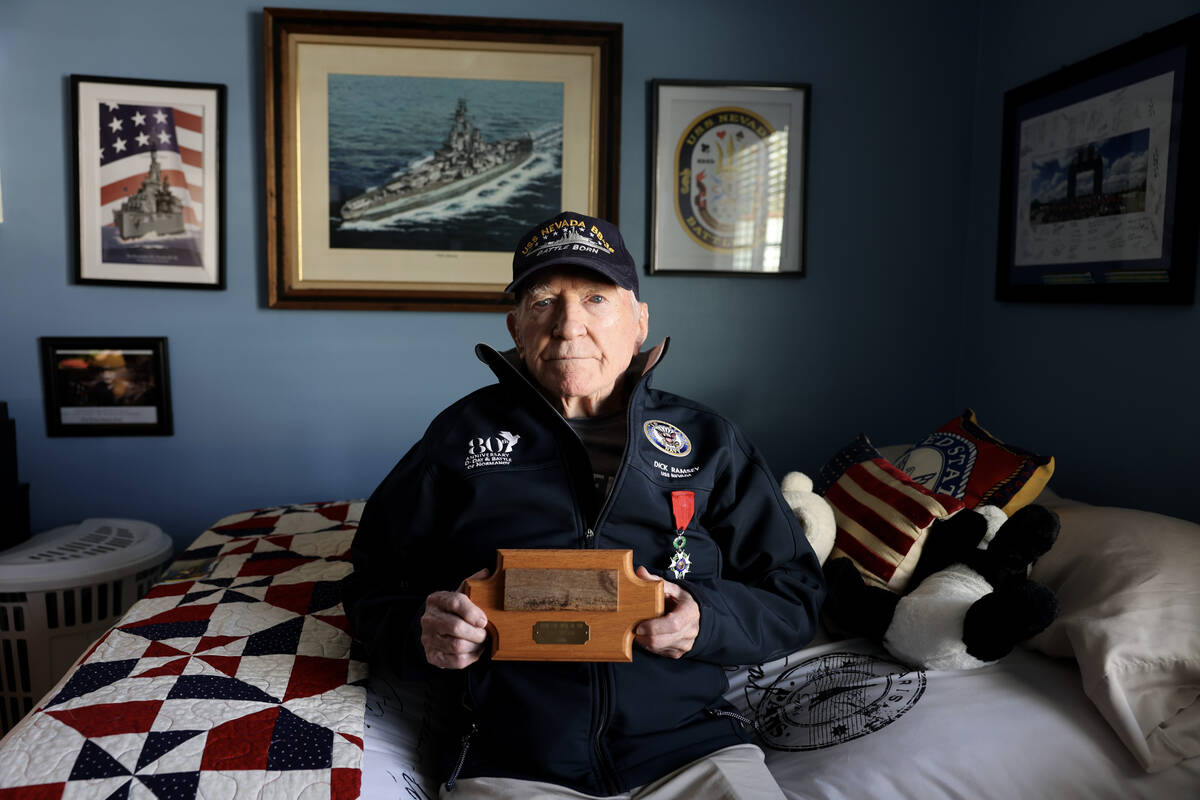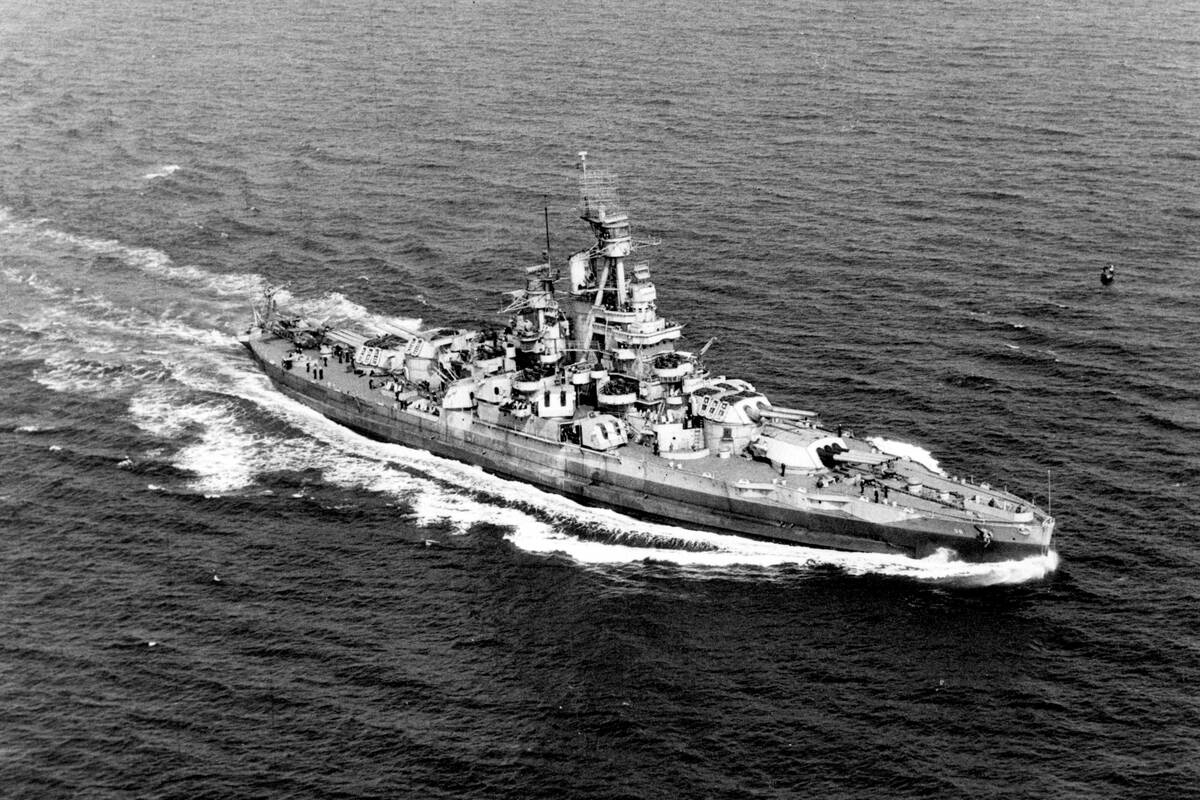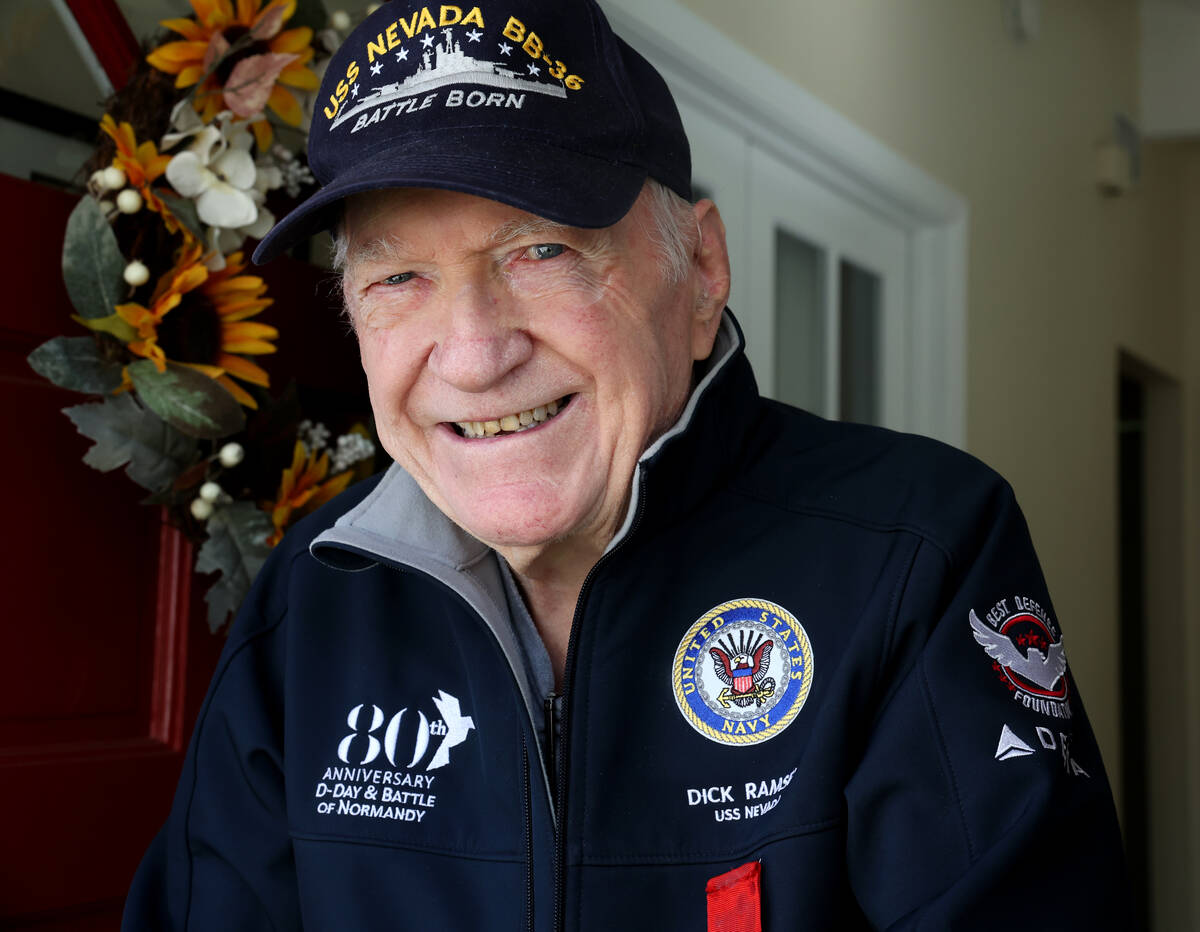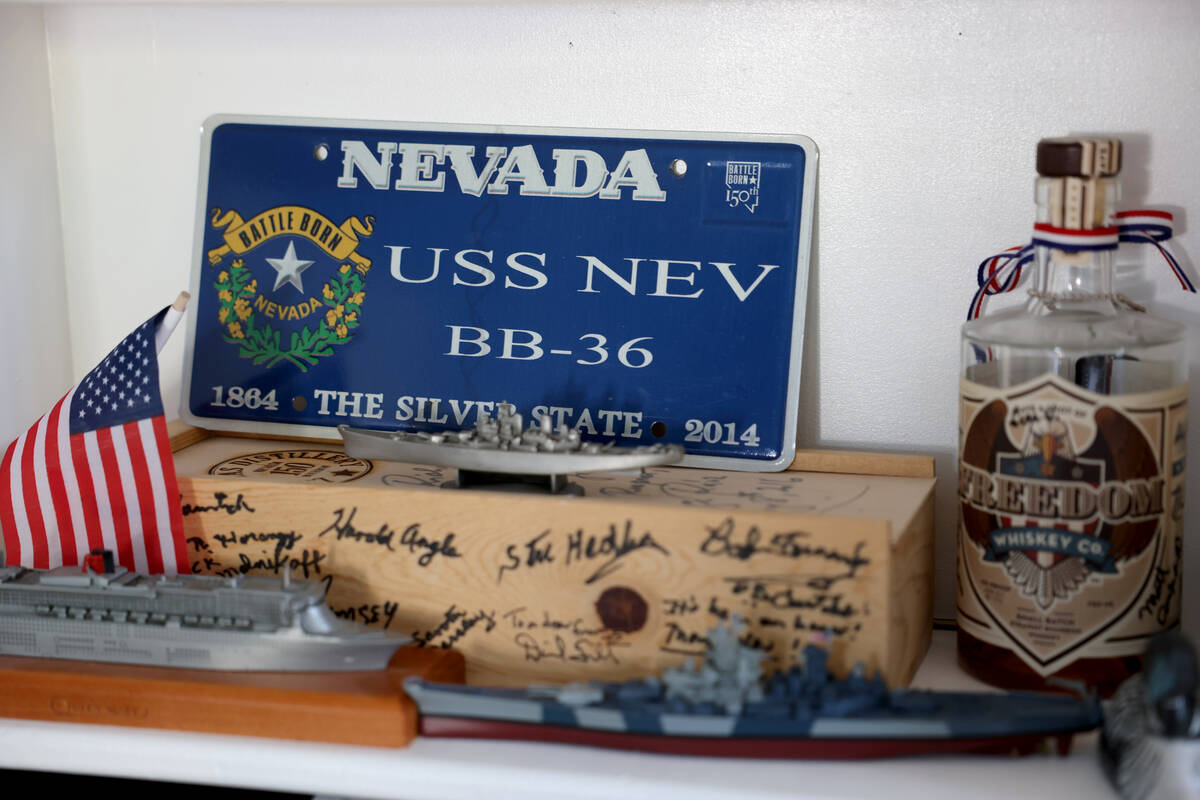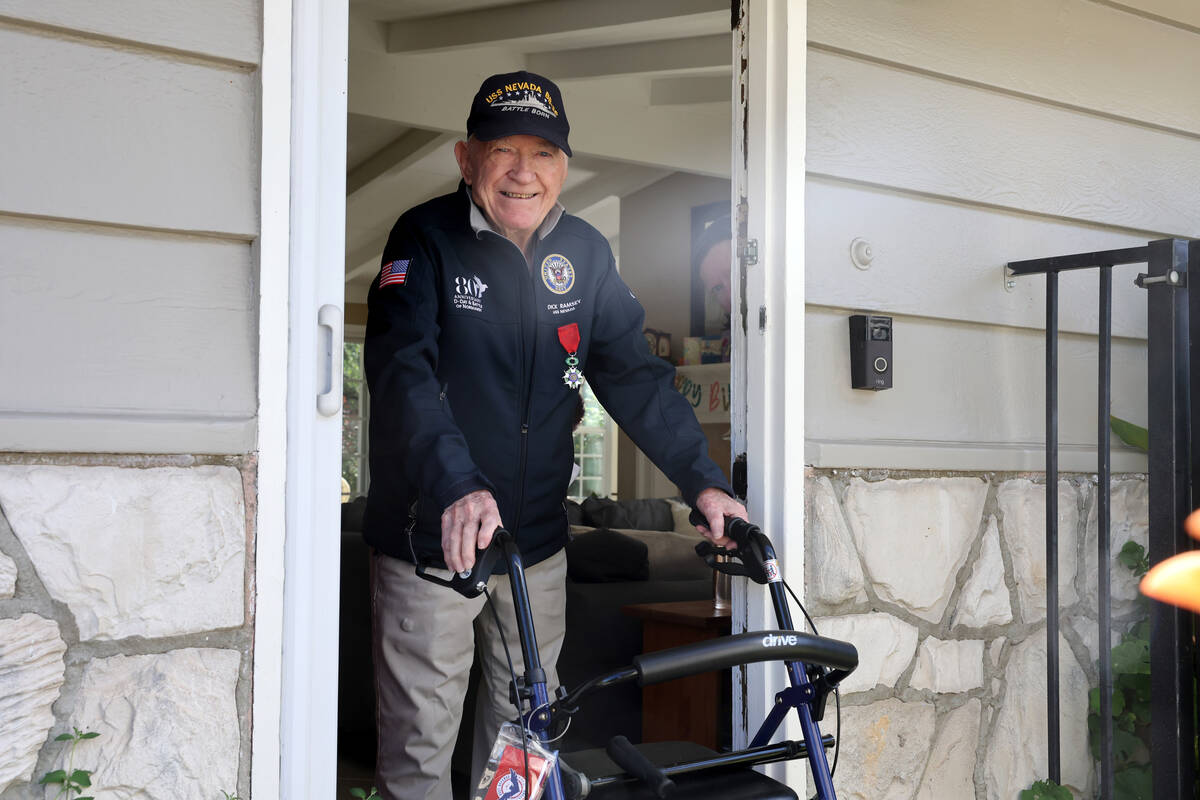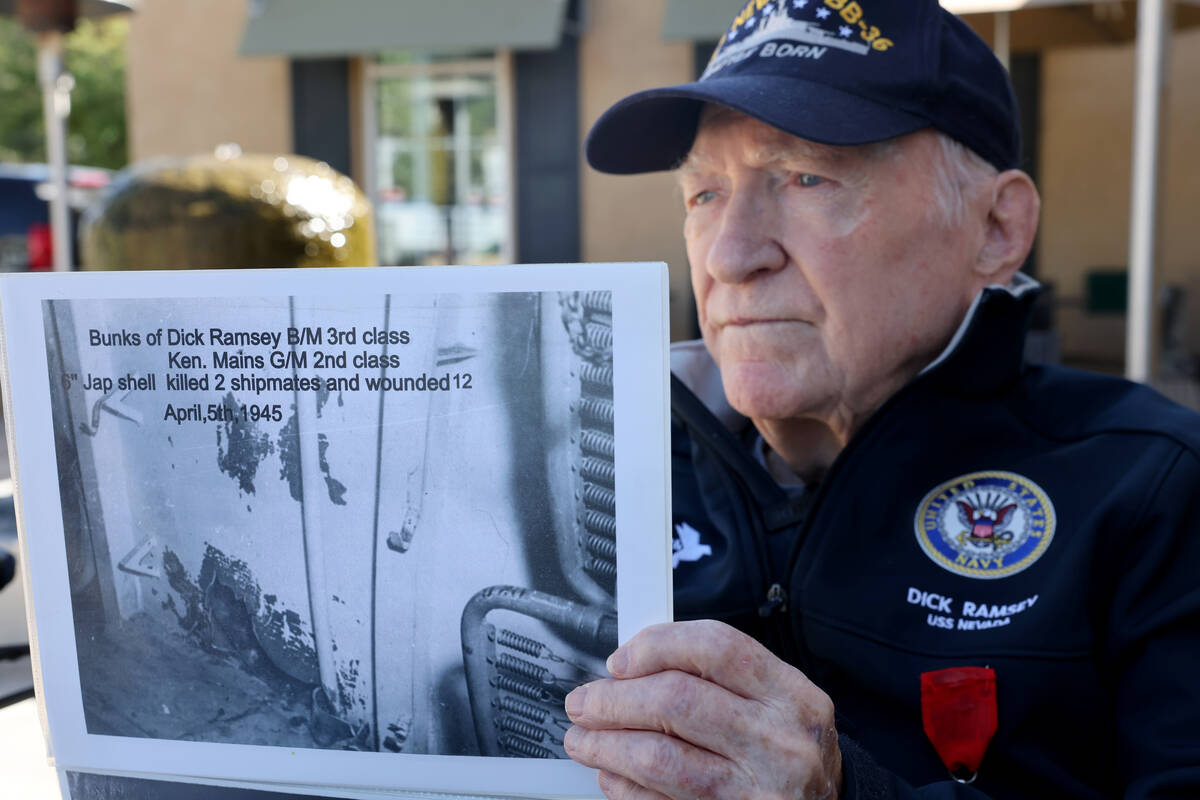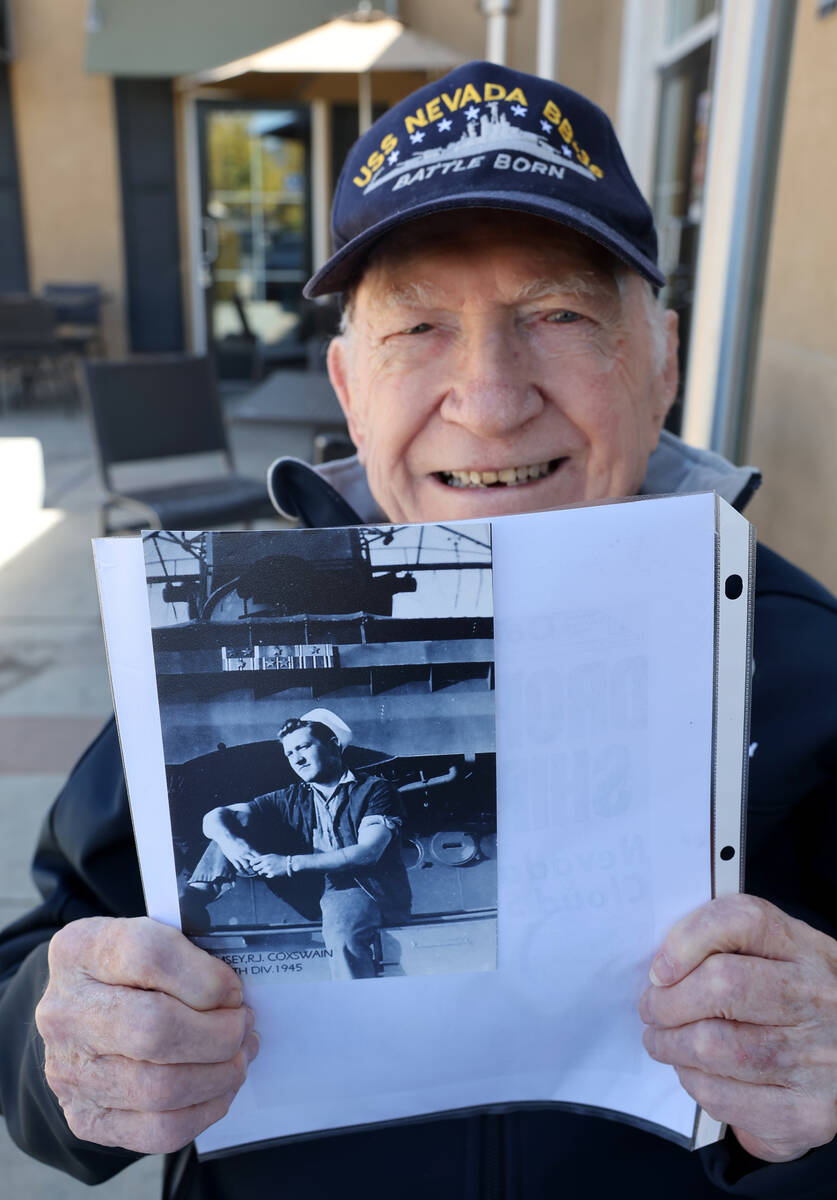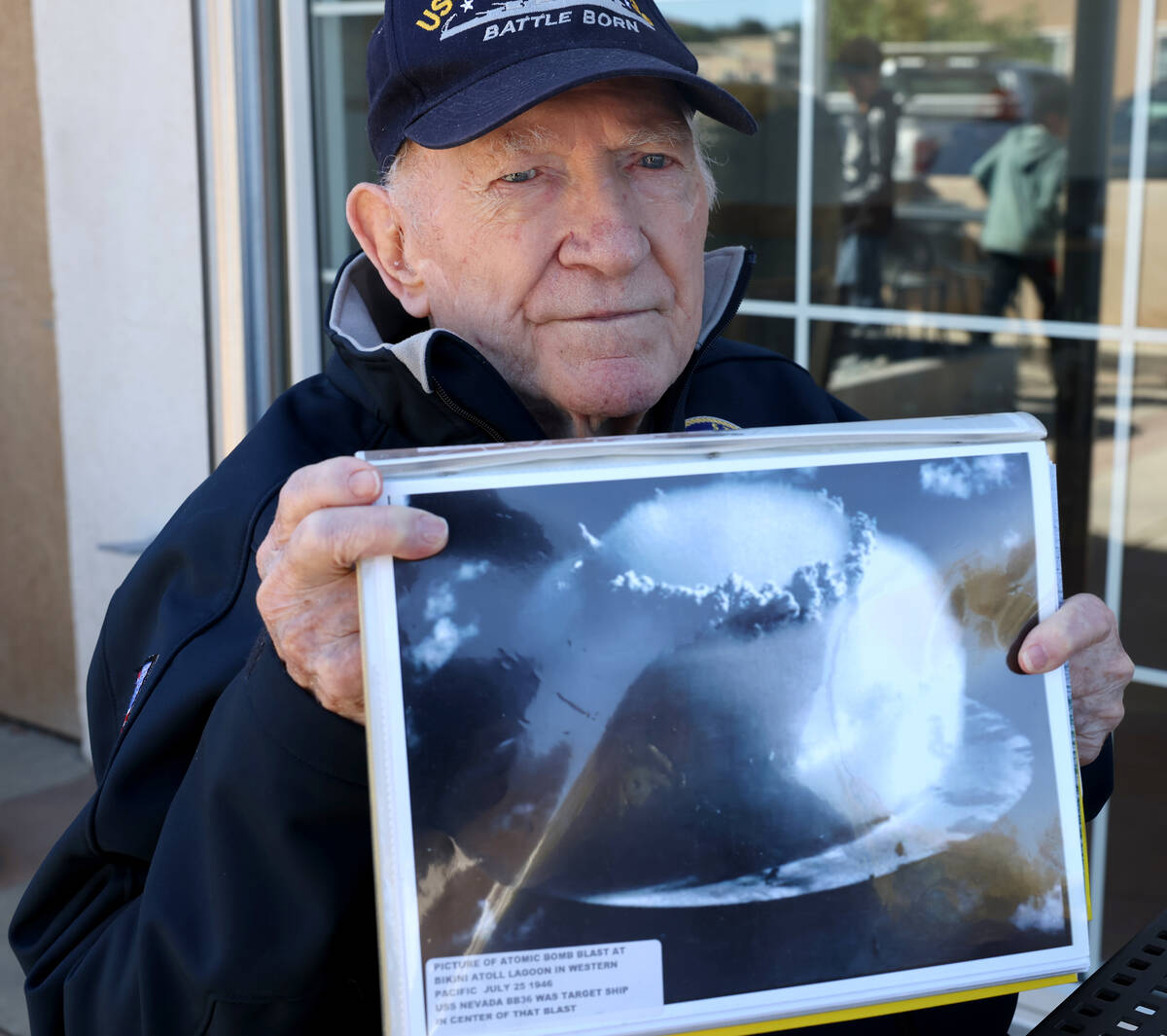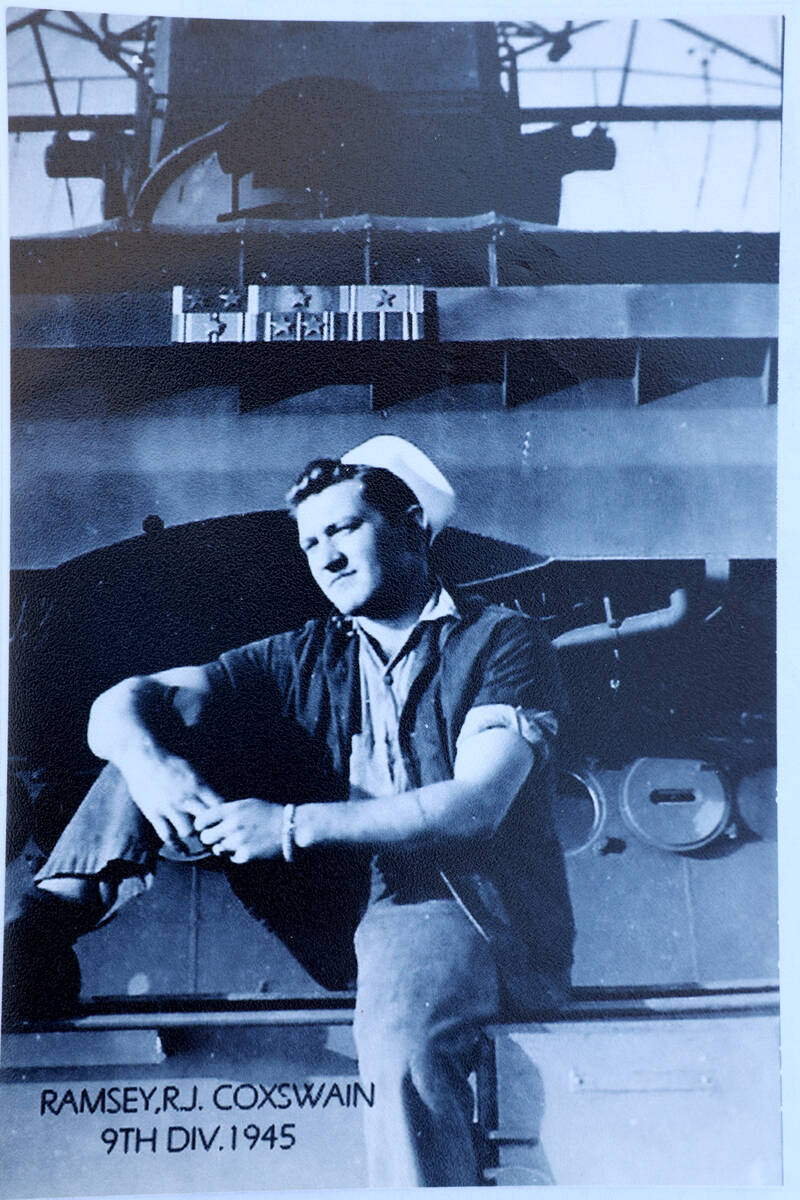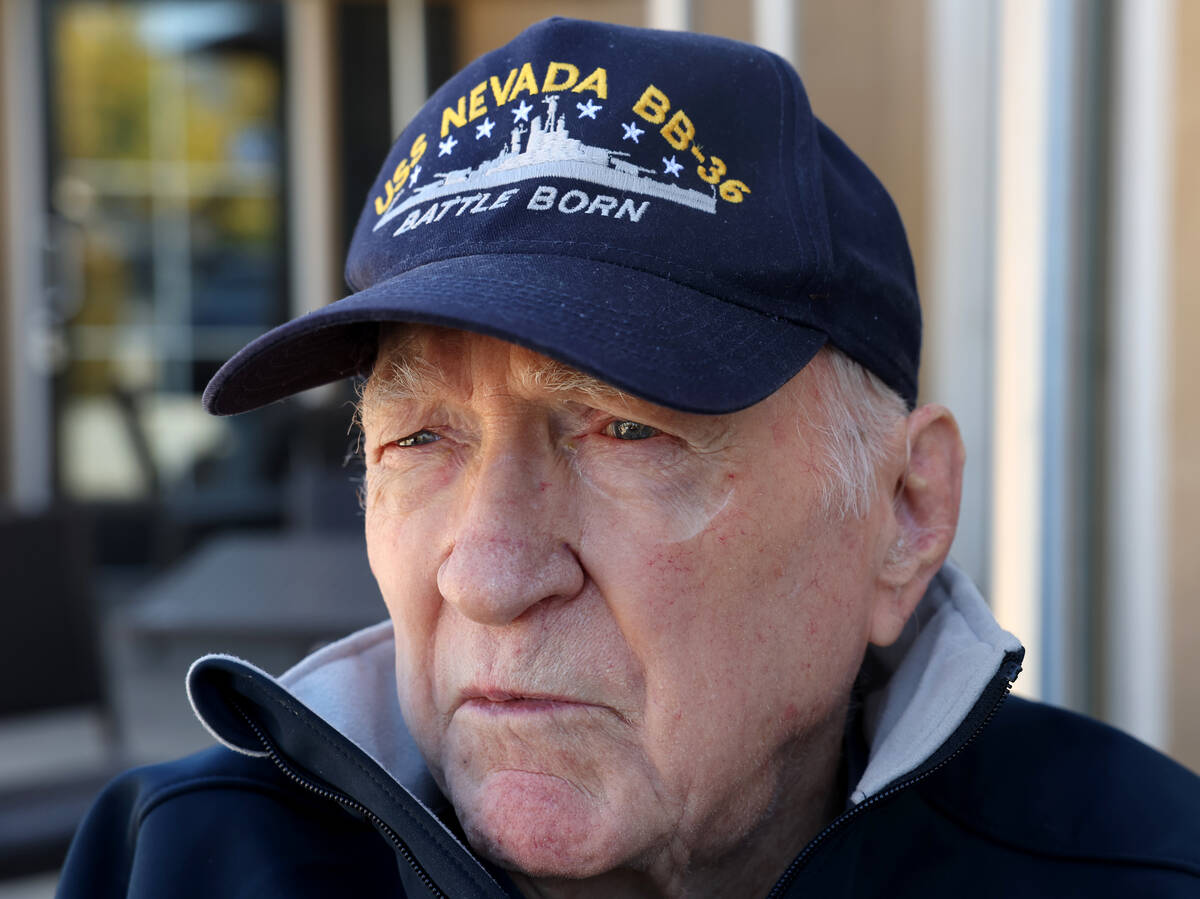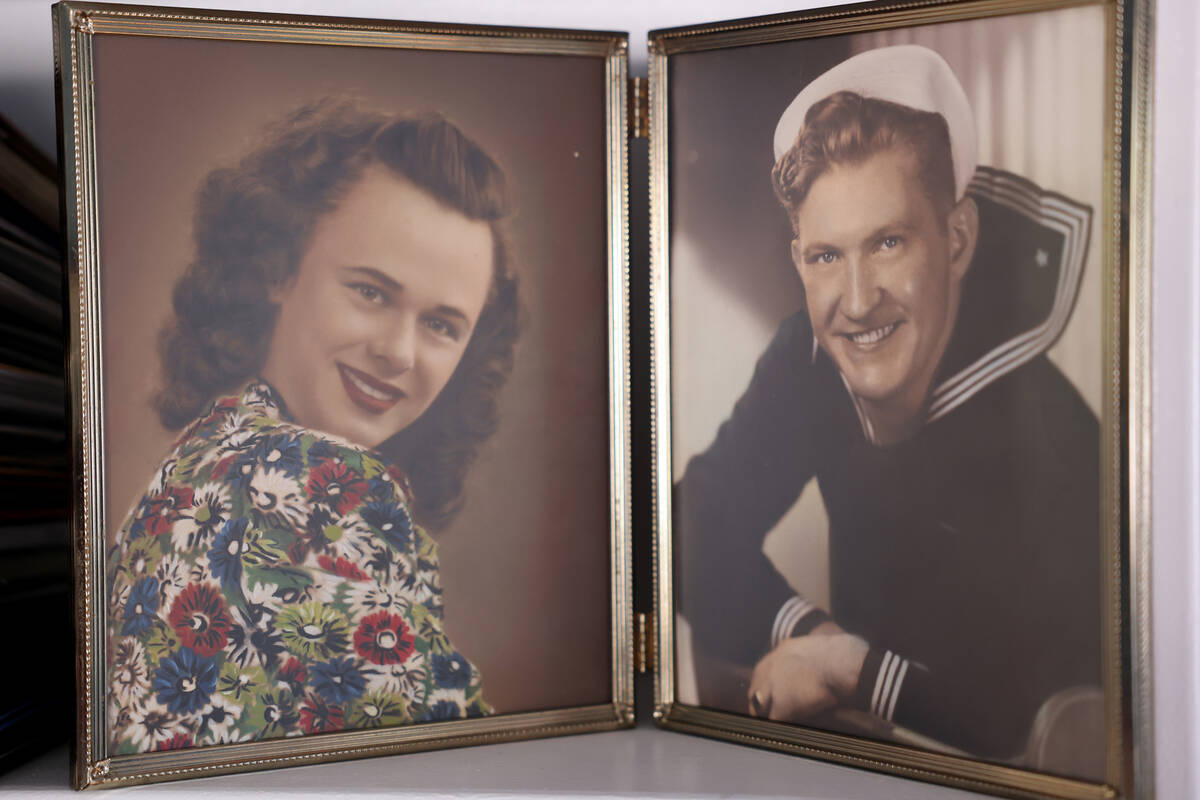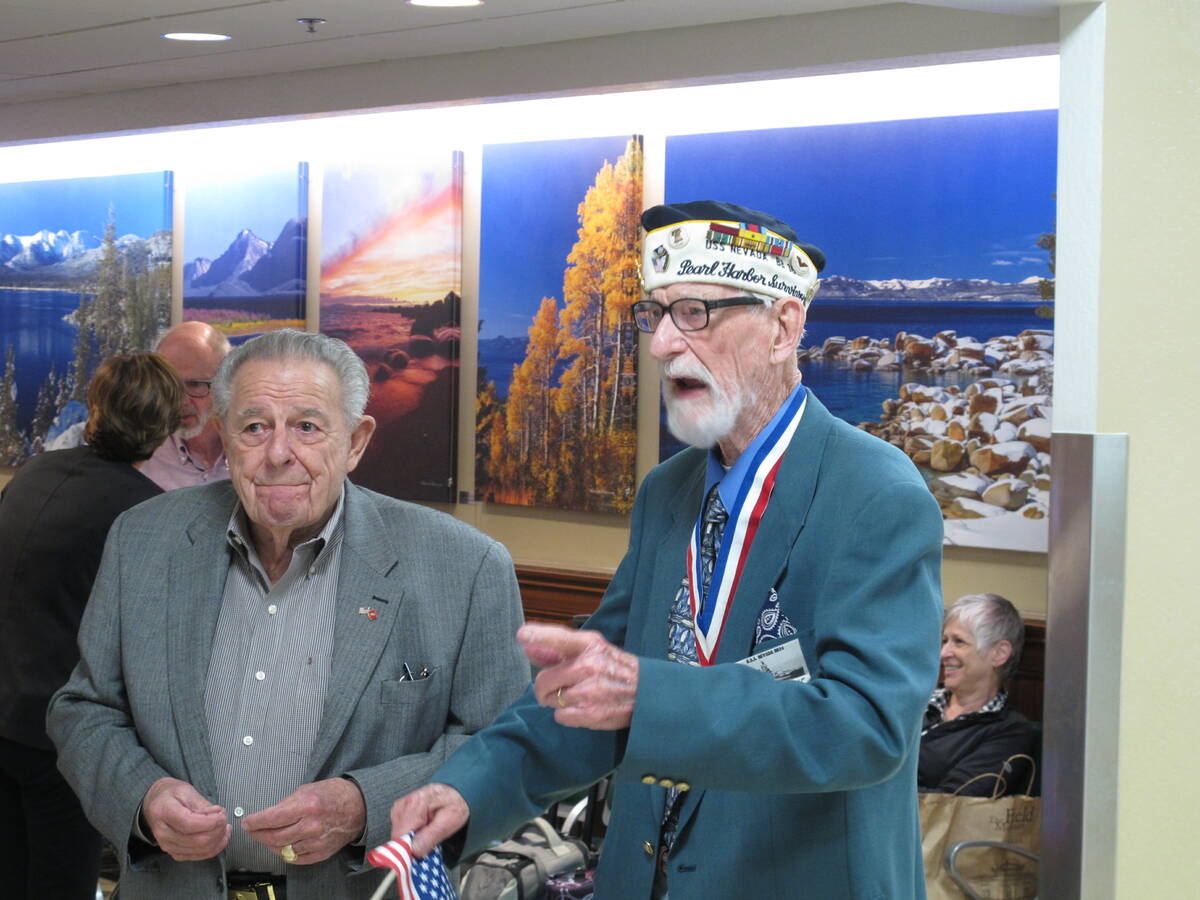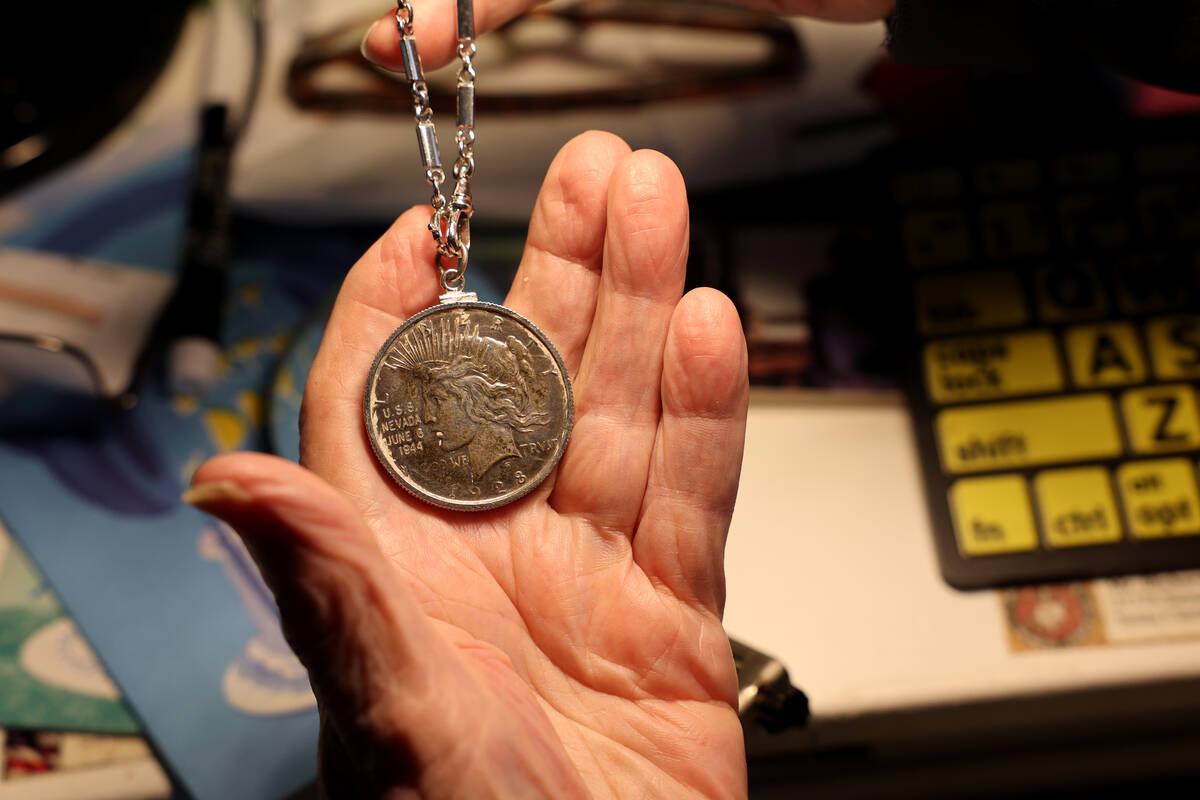There’s just one USS Nevada veteran left. His mission is to keep the ship’s memory alive
Dick Ramsey’s bedroom at his daughter’s home in Santa Clarita, California, is a shrine to his long-ago naval service and a ship that was destroyed 76 years ago.
There’s a painting of the ship, the USS Nevada, a piece of the Nevada’s teakwood deck, a photo of Ramsey as a young man in uniform, a collection of medals.
Ramsey turned 101 on Oct. 31, and his longevity makes him the last living veteran of the Nevada as well as one of the last veterans of D-Day.
Over the years, he’s become a keeper of the flame for a ship with a distinguished service record at Pearl Harbor, D-Day, Iwo Jima and Okinawa, but less name recognition than ships such as the USS Arizona, which was infamously struck during the attack on Pearl Harbor.
“If you were a barnacle that attached itself to the USS Nevada on, say, December 6, 1941 (the day before the Japanese attack on Pearl Harbor), you saw some of the most memorable action in World War II,” said Michael Green, a history professor at UNLV.
Yet, “there’s so much there about the Nevada that nobody knows,” Ramsey told the Review-Journal in a recent interview. “It’s the forgotten ship of World War II. And this is my lot in life, to keep it alive.”
The second-to-last surviving crewmember of the Nevada, Charles Sehe, died on Nov. 3, at age 101.
‘That’s not a submarine’
Ramsey was born in Brooklyn — he hasn’t lost his New York accent — and grew up during the Depression.
“We weren’t eating too well, and I was basically a sickly child,” he said. During Prohibition, a doctor prescribed him half a pint of liquor, which he took in a shot glass with sugar.
His father had served in France in the infantry during World War I, and Ramsey grew up hearing stories about his dad’s military experiences.
The military service of Ramsey’s family goes back to the Civil War, when his great-grandfather helped build the Monitor, the first ironclad ship.
When World War II broke out, Ramsey got a job working with pipe fitters at the Brooklyn Navy Yard, where he helped build the USS Iowa and USS Missouri.
Then, in 1943, he enlisted in the Navy. He volunteered to serve on a submarine, but the military had other ideas. Ramsey and other submarine volunteers were sent to California, and after about two weeks, they were taken to what Ramsey thought was the biggest battleship in the world.
“I just said to the petty officer, ‘That’s not a submarine,’” Ramsey said. “He (said), ‘Are you one of the wise guys?’”
The ship was the Nevada, a World War I-era, 27,500-ton battleship built in Quincy, Massachusetts, and commissioned in 1916. Japanese planes attacked the Nevada during Pearl Harbor, but by the time Ramsey joined, the ship had been repaired and was ready to return to combat.
D-Day
“It was a spartan existence” on the Nevada, Ramsey said. The ship had been built for 864 men but held about 2,200 by D-Day, according to retired Rear Adm. Samuel Cox, director of the Naval History and Heritage Command.
There weren’t enough bunks, so Ramsey slept in a hammock, “like a baby in a cradle.” Letters were censored and ended up looking like “pieces of ribbon.”
The sailors had a limited awareness of the role the ship would play at the D-Day invasion.
“We weren’t given any information at all,” Ramsey said. But there was an inkling that the Nevada, one of the oldest battleships in the Navy, was considered dispensable: The sailors were issued knives to cut the ropes on the life rafts.
On D-Day, June 6, 1944, the ship left from England and arrived in the Bay of Seine at about 1:30 a.m., Ramsey said.
“The sky was alive with anti-aircraft fire,” he said.
Ramsey saw paratroopers and glider planes get shot down from the sky.
“Those young men, they gave up their todays for our tomorrows,” he said.
At Normandy, the Nevada was one of the command ships and went to Utah Beach.
Then-Supreme Commander Dwight D. Eisenhower wanted heavy guns for the invasion, Ramsey said, and that meant using old battleships: the Arkansas, the Texas and the Nevada.
The Nevada bombarded German fortresses and shore batteries so there would be no resistance when troops hit the beach, then acted as field artillery, he said, destroying many German tanks and troops.
For 80 hours, Ramsey was stationed in the powder magazine on the ship’s third deck, sending up ammunition.
“We were thinking of our job,” he said. “That’s all we could think of. We were in survival mode. If we didn’t keep the guys supplied with ammunition, they couldn’t fire.”
‘I don’t relive bad things’
Ramsey saw a lot while serving on the Nevada, but he doesn’t dwell on unpleasant memories.
“I don’t relive bad things that happen,” said Ramsey. “You gotta forget them.”
One experience did affect him.
Before the invasion of Okinawa, he and his chief petty officer — who gave Ramsey the nickname “Redhead” — were watching movies on the top side of the ship.
“All of a sudden, the projector went black,” he said. Then, the sky lit up with an enormous explosion.
A suicide pilot had hit the Randolph, a carrier ship, killing 25 men and wounding 106, according to the Naval History and Heritage Command.
The next day, Ramsey’s chief petty officer said, “If that few people are going to be killed in an explosion like that, I’m not going to worry anymore,” according to Ramsey.
Weeks later, a suicide plane hit the Nevada and the officer was one of the men killed. For a while, Ramsey would dream about the officer calling “Redhead,” “Redhead.”
Eventually, those dreams stopped.
Silver dollars and life lessons
After D-Day, the people of Nevada gave each crew member a silver dollar made at the Carson City mint in appreciation of the ship’s accomplishments, according to Ramsey and Review-Journal archives.
The governor of Nevada — E.P. Carville at the time — said he wanted to shake every man’s hand and give them their dollars, plus a cigar, according to Ramsey.
“He never showed up,” Ramsey said.
But the coins did. Ramsey still keeps his in his bedroom, on a chain that his wife got.
His wartime experience stayed with him in other ways.
Ramsey said his service taught him to be a leader, give and take orders, be disciplined, control his temper and be considerate of others’ opinions.
After the war, he turned down a promotion to boatswain’s mate that would have required him to stay on the ship for six more months. He later learned that the ship was used to test the atom bomb and that his friends who went on board afterward were exposed to radiation. Had he stayed on the ship, he could’ve been exposed, he said.
Instead, he returned to his navy yard job. In 1946, he got married. He spent years working as a lithographic pressman, then he and his wife bought a bed and breakfast in Massachusetts. She died after they were married for 56 years. He remarried but outlived his second wife, too.
Now, he lives with his daughter and praises the way she cares for him. “I don’t think she expected me to live this long,” he said. “I can be a cantankerous old man sometimes.”
Dedicated to the Nevada
The USS Nevada remains a major part of his life and, as the last crew member, he’s become a champion for the ship and a center of attention.
He’s spoken at high schools and colleges to try to keep its memory alive. He signs autographs for collectors and responds to letters from school children. He corresponds with history enthusiasts like John Galloway, who designed a commemorative license plate for the ship and said in a recent interview that the Nevada was “a magnificent ship” that “embodies the American spirit.”
Ramsey is so dedicated to the Nevada that when he dies, he wants a portion of his remains to be buried over the battleship, which the Navy sunk with an aerial torpedo in 1948. It’s located 65 nautical miles southwest of Pearl Harbor. Two of his friends from the war rest at the site already.
“I don’t want them to be lonely down there,” he said.
Contact Noble Brigham at nbrigham@reviewjournal.com. Follow @BrighamNoble on X.



